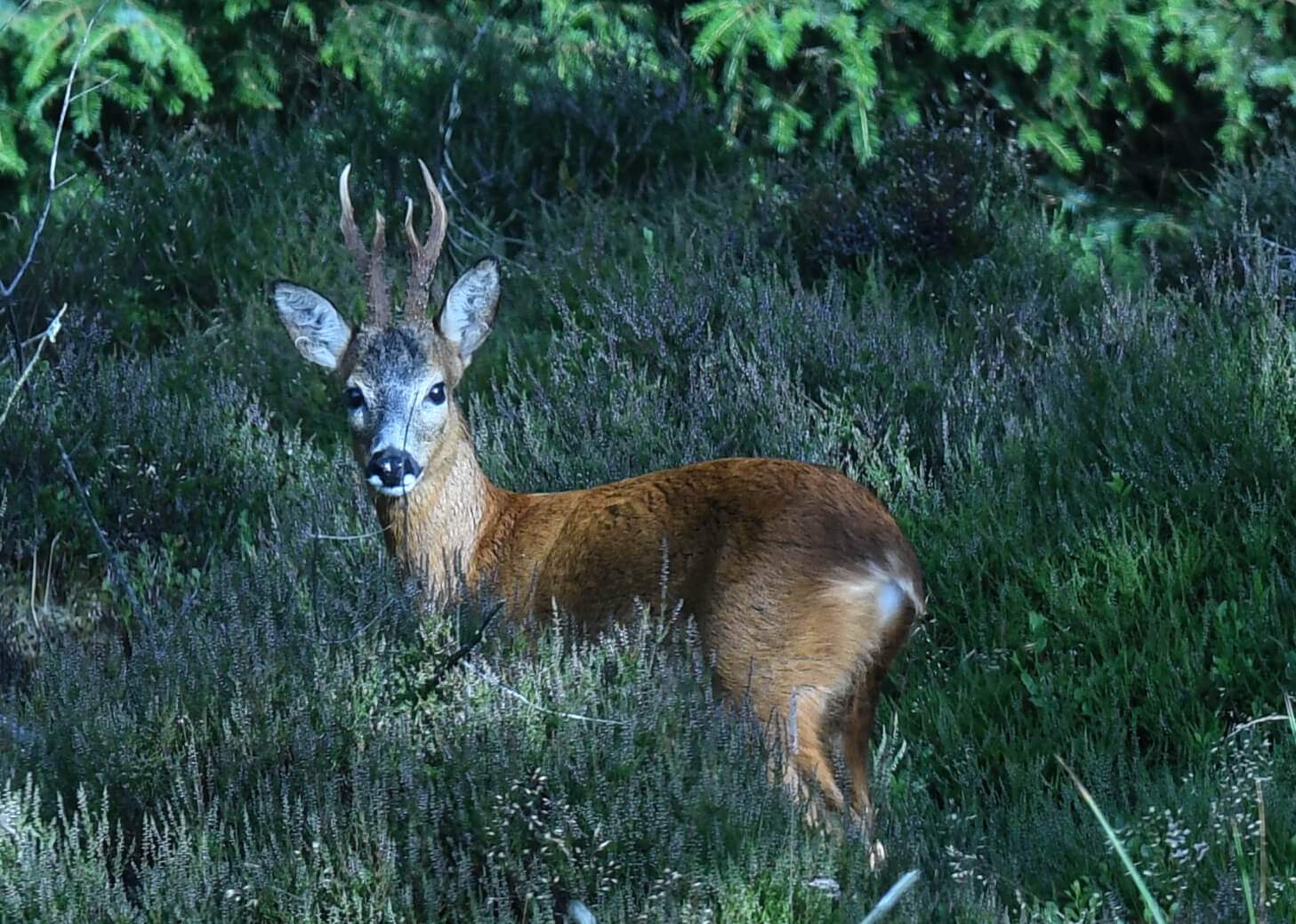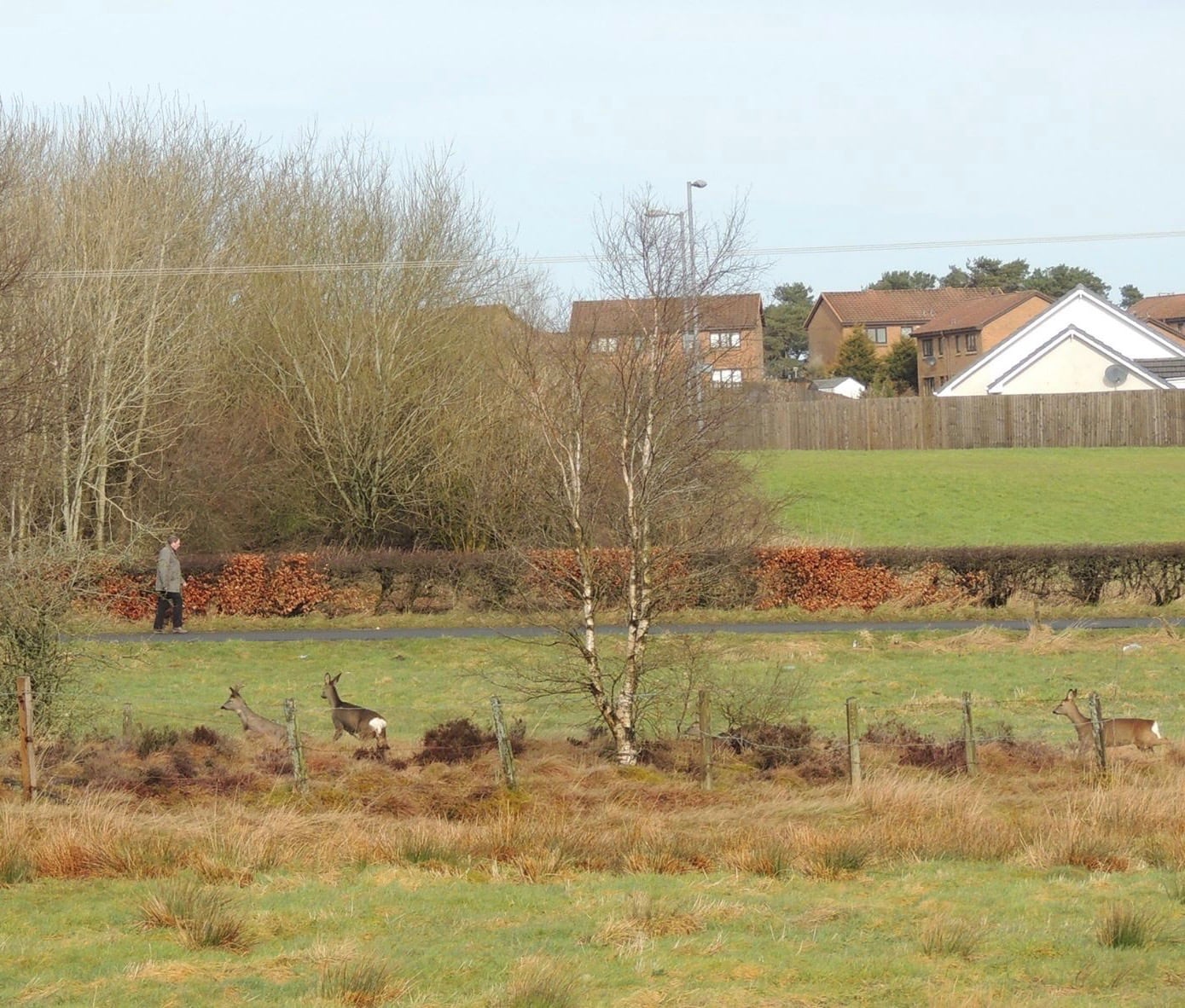
The SGA Deer Group this week delivered its consultation response to Minister Lorna Slater on proposals for secondary legislation which would see a/ the removal of male deer seasons in Scotland b/ the legalisation of thermal scopes for culling deer and c/ changes to bullet weights to encourage greater take-up of copper bullets for shooting deer.
You can read the SGA response, in FULL, below.
The SGA has significant animal welfare and safety concerns regarding the use of thermal imaging scopes for culling deer.
With this in mind, should it be decided that the technology is legalised for shooting at night, it should be licensed, with mandatory training. A minimum standard of equipment should also be classified for use. Currently, there are a range of units available on the market offering a very wide differentiation in quality.
The use of two units will also require to be made mandatory (one for locating deer and one for shooting). It is presently against best practice for deer managers to use a rifle scope to spot deer as this would mean pointing a rifle in order to locate deer. This is rightly regarded as a danger to public safety. An additional element to be considered is the cost of 2 units. In order to be in possession of the type of equipment required for safe shooting, this is likely to mean an investment of a minimum of £10 000 which may be beyond peoples’ budgets. We must ensure that, for reasons of cost, people are not being tempted to cut corners, when the objective is safe shooting and promoting high welfare standards in Scotland.
Changes would also have to be made to Best Practice and the Fit and Competent test for Night Shooting Authorisations because of the attendant welfare implications.

Training would have to encompass critical safety issues such as back stops. What is a safe back stop in a woodland environment? It may be very difficult to find a safe back stop at night using thermal imaging.
This could have major implications for public safety, particularly if non-lead ammunition such as copper (greater ricochet potential, see 2 below) is being used as standard.
Similarly, objects such as twigs, branches and foreground bracken represent a major hazard, potentially causing unpredictable deflections. This may lead to wounding of an animal or an animal not being followed up, as well as safety issues. We have heard from individuals who were involved in FLS testing of thermal equipment who, for this reason, advocate a survey of the area in daytime, before a thermal scope be used in the same area at night.
There are other animal welfare implications in that it is very difficult, in darkness, to match up females with dependent young and this may lead to calves being orphaned and greater risk of youngsters starving to death, particularly with forestry culls now happening in the first week of September. The SGA is not supportive of moves which would lead to night shooting becoming the norm in Scotland.
The Impact of Different Culling Methods on Physiological and Physical Carcass Variables of RED Deer RP58b: was carried out by The Royal Dick School of Veterinary Studies. In the summary, the authors state: Culling of wild red deer with a rifle by one stalker during the day and the culling by rifle of deer in a field were the most accurate. The culling by rifle at night by one stalker was the least accurate in achieving placement of a shot likely to have quickly killed the deer. It also states: The highest percentage of deer that after the first shot, ran or walked away without collapsing, were in wild deer shot by rifle at night by one stalker.
Night shooting, therefore, is a method proven under test conditions to be the least in the interest of animal welfare, which requires quick, humane dispatch, hence the SGA being opposed to the normalisation of night shooting.
Selecting the appropriate cull animal is also compromised and this will have long term impacts on the overall quality and health of the herd.
The SGA does not have an issue with amending the bullet weight, per se, but a significant portion of our members cite drawbacks from the use of so-called ‘non-toxic' ammunition, which we feel are important and must be considered with any change.
We also have one comment on the propensity for 80g bullets to drift in the wind and wonder if this has been factored in. Even those using 100g bullets have reported experiencing considerable drifting, particularly when shooting over gullies in a strong wind.
In terms of copper bullets, consensus amongst professional stalkers within the SGA Deer Group is that the chances of ricochet increases with copper, which has obvious safety implications. This carries even greater significance at night, when copper may be used in combination with thermal scopes, coupled with a reduced ability to identify a safe back stop. Some who have tested various makes of copper bullets have told us that certain makes were heard to ricochet far more than others, which is concerning. Given high access, at all times of day, in built-up areas, in particular, the danger to public safety cannot be discounted.

In open hill situations, stags may be culled on scree faces and a copper bullet that passes through a carcass without hitting bone, may well ricochet off a stone and travel a distance, which is then out of the deer manager’s control. The bullet may even rebound back towards them. Experienced stalkers have also heard of copper ricochet off bone, striking another animal in the herd. Use of copper in a woodland setting is very different than in an open hill setting, where deer tend to be further away and issues such as stability, drifting and reduced expansion could all be to the detriment of a quick, humane kill.
Similarly, the limited expansion and shocking power of non-toxic ammunition, compared to lead, means shot animals behave very differently which sometimes makes it more difficult to ascertain initially whether an animal has been hit. Animals shot with copper tend to require more follow-up shots, in general, which has welfare implications when the objective is to shoot deer as quickly and humanely as possible.
The SGA has significant reservations, therefore, with lead alternatives at the present time, and what it means for animal welfare and public safety.
The SGA opposes ending the male seasons for a number of reasons. Firstly, as a regulator, NatureScot currently has oversight on authorisations granted for culling males outside of the season.
This is helpful, provides data on their use and conditions can be attached in certain circumstances, which can be beneficial. We see no compelling reason for a regulator to dispense with that beneficial oversight.
Secondly, the SGA is unconvinced that targeting males all year round will reduce deer numbers. Conversely, we believe it may increase numbers because more effort will be put into shooting the easier Stags when it is the females that drive the population.
Without a closed season, it may increase demand for Stags, too, as people extend their shooting seasons.
While we welcome the fact that female seasons are not currently being subject to secondary legislation, there remain animal welfare issues if males are to be shot year round.
Outwith the rutting season, stags and hinds live in separate groups but the distance between these groups can be minimal. Culling a stag during the closed season is not a welfare issue to the stag, but is to the rest of the herd. In their panic to flee the area, they burn up much needed body fat reserves required to see them through the winter months until the spring. If a herd of stags are in proximity to a group of hinds, the hinds too will flee the area, burning up much needed body fat reserves. Many of these hinds will be heavy in calf and continued disturbance, culling stags where hinds are resident in late winter and early spring, may well lead to abortion. What also must be considered is the welfare implications of disturbing deer of either sex especially during the winter months when they are in poorest condition. Continual disturbance may drive them out into areas where insufficient nourishment exists, thereby increasing the risk of starvation and mortality.
Consideration must be given to herd dynamics. Indiscriminate culling of roe bucks, in and out of season on FLS forests is one of the main reasons why deer damage is running so high. If you remove the master buck in an area of woodland, you remove the buck that has been evicting other males and, by doing this, you allow other younger bucks to move in- and they, as they lay claim to the vacant territory, cause serious damage by beating up young trees with their antlers.
Furthermore, great efforts are being expended in making quality venison a product we can rightly be proud of in Scotland. Out-of-season venison is not a quality product. During the rut, stags lose two and a half stones of body weight due to their rutting activities and, by late spring, are skin and bone. Why cull stags when they are in poorest condition, if we want to champion quality?
Finally, whilst the three elements of this document are handled separately in order to provide a response, it is the measures in combination which are of significant concern to the SGA.
In tandem with one another they represent a significant downgrade and deregulation of animal welfare which seems at odds with Scottish Government’s protection of other species, as demonstrated by recent legislative moves surrounding foxes, rabbits and mountain hares.
All year round hounding of male deer could never be regarded as a pro-welfare step and it should be remembered that night shooting is banned in many European countries due to the inability to cull in a selective, welfare-friendly manner. Given the additional implications for public safety, already mentioned above, the SGA wishes its views to placed on public record on these two critical issues.
Prepared by the Scottish Gamekeepers Association (SGA) Deer Group.
June 2023.